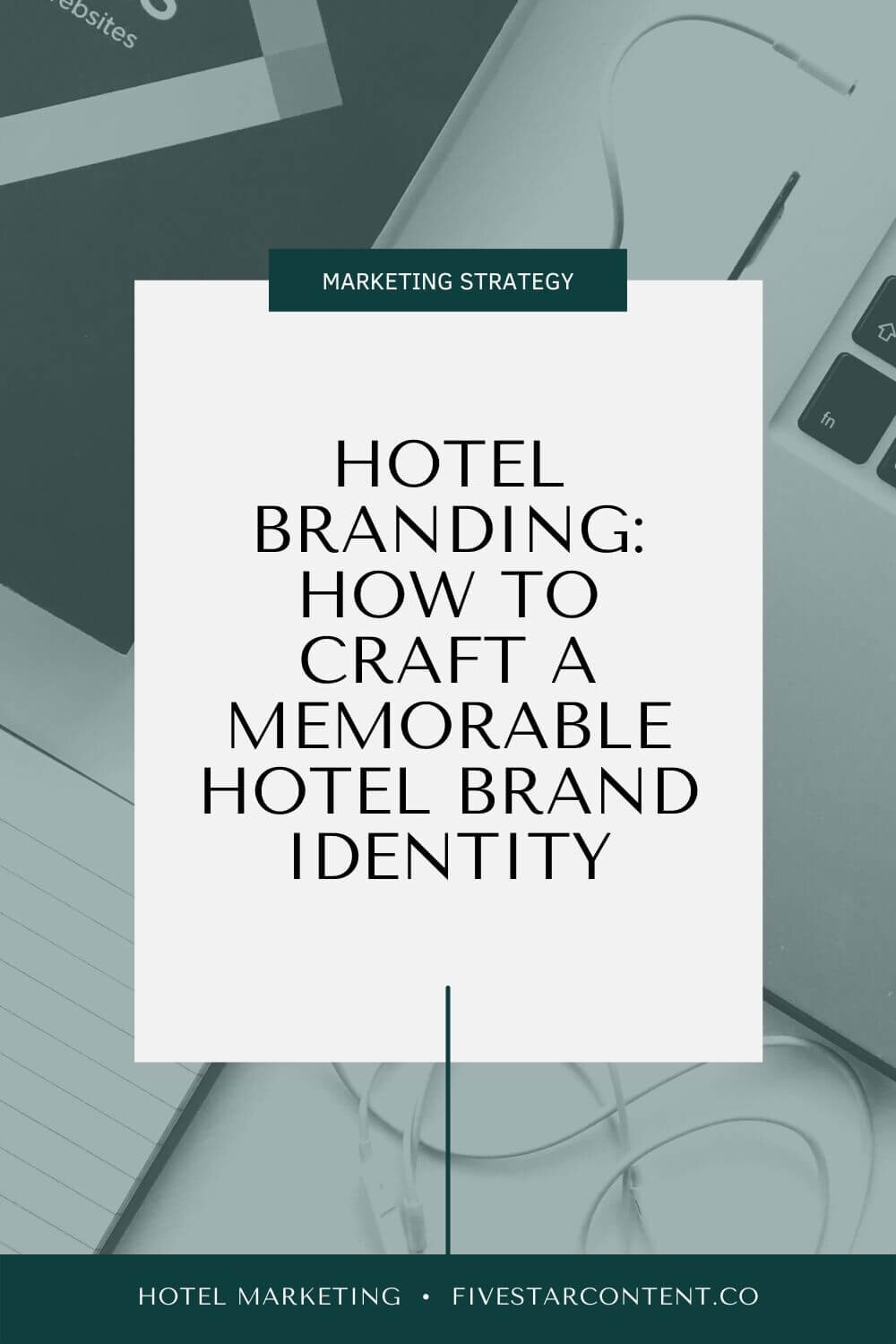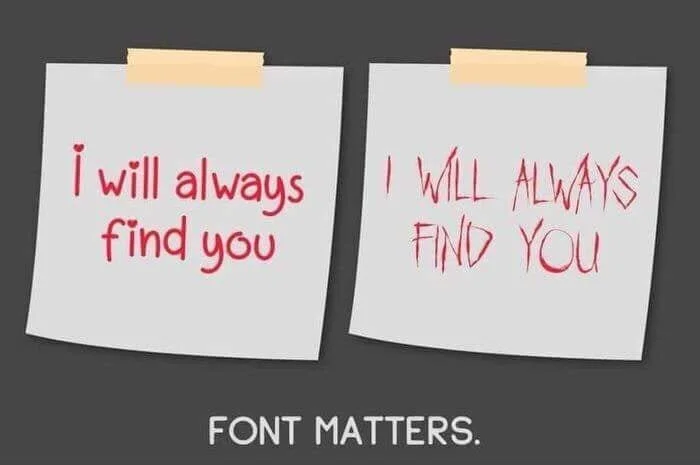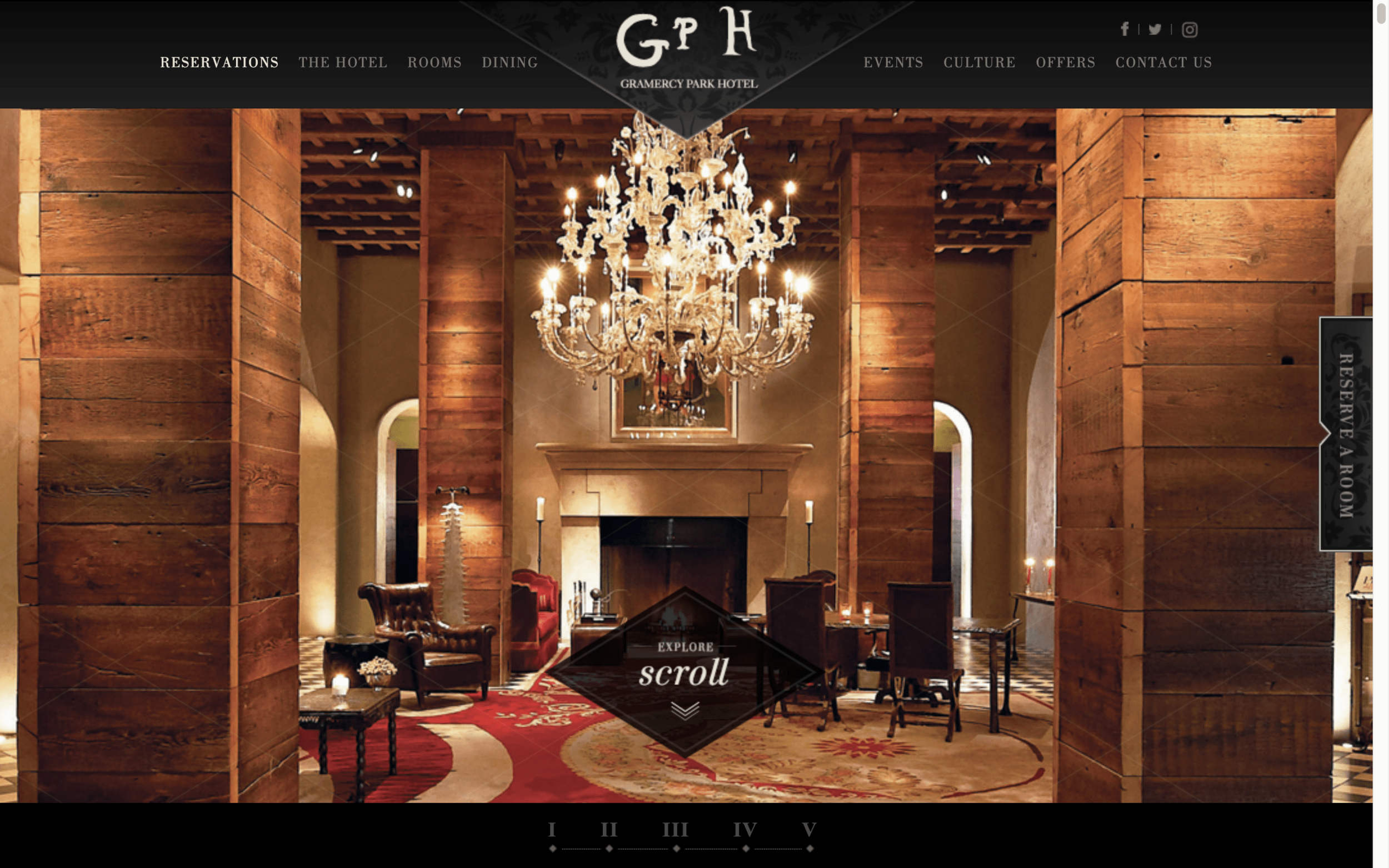Hotel Branding: How to Craft a Memorable Hotel Brand Identity
Whether you’re getting ready to open a new hotel or reconsidering your current market positioning, hotel branding is an important part of your business strategy.
Your hotel brand is more than a nice logo or using the same filter on all of your photos.
Your hotel brand represents who you are and invites like-minded guests — who can’t wait to experience what you have to offer — to book their stay!
By using both memorable visuals and engaging written copy, you can ensure your hotel stands out online in a sea of competitors. Branding also helps you show guests what to expect, long before they ever set foot in your hotel.
With this in mind, read on to learn all about branding a hotel, from why it’s so important to the exact elements you need to nail down to get started.
Why is branding so important for hotels?
We all know consumers have a lot of options when it comes to picking accommodation.
When you look for a place to stay on your own travels, you consider a lot of different factors. If you’re thinking, “um, a nice logo ain’t one of them,” well, I completely agree!
No one chooses a hotel because of their cool logo.
We choose hotels because of price, location, vibe, amenities, services, and design, among many other things.
Branding is still important for hotels for two main reasons:
Branding helps you stand out from the competition
Branding helps you build trust
Let’s look at both of these reasons in more detail…
1. Hotel branding helps you stand out from the competition
As always in hotel marketing, everything starts with knowing your customers.
Your hotel brand should play a role in how you present yourself online and in social media, which partners you choose to engage with, and even the experience you create on-property.
We all have our favorite brands.
Those brands we choose time and time again, because we know they’ll be consistent (Starbucks), or stylish (Warby Parker), or easy to use (Apple). They make something in our life easier (HelloFresh), or maybe they give us a sense of status and luxury (Four Seasons).
☝️ All of these brands I just mentioned have figured out what their ideal customer wants — and they stand out from their competition because they deliver it.
99designs says it perfectly: “Great branding shows customers what makes you, you.”
Which leads me to…
2. Hotel branding helps you build trust
Whatever you may think of Starbucks personally, you can’t deny that they’re consistent. Wherever you go in the world, the Starbucks experience (and coffee) is pretty much the same. It’s part of their brand.
Hotels are no different.
In fact, this concept is exactly how larger hotel chains are able to create loyalty: they ensure a consistent, reliable experience at multiple properties.
Branding is important for smaller, independent hotels, too.
Remember, your hotel guest experience starts online.
Creating a brand that’s consistent from pre-booking to post-stay is how you’ll attract the right guests — and turn them into repeat, loyal customers.
The way you present your hotel brand can make or break your credibility.
OTAs enjoy a high degree of consumer trust, so if you’ve managed to get that booker onto your website, you still need to show them that you’re legit.
The combination of a consistent brand, social proof in the form of real guest reviews, and even live chat are all elements that make your hotel website more trustworthy.
Read Next: What Features Do You Really Need On Your Hotel Website?
What is hotel and hospitality branding?
Let’s back up a bit. What is branding, anyways?
Brands, branding, and your brand identity are not exactly the same thing. Here’s the short version:
Brand = how others perceive you/your business
Branding = the design choices that shape that perception
Brand identity = the collection of visual and verbal elements you use to get your message across
Simply put, branding is how we differentiate one product from other products. Branding can include a few different elements that form your brand identity, including the name of your business, a symbol or design, or even the words you use to talk about your product.
In hospitality, you’ll notice that larger hotel groups create many smaller sub-brands to appeal to different audiences. Each of those brands gets its own brand identity to help shape the way their ideal target customers perceive it.
Marriott, for example.
Since they acquired Starwood a few years ago, Marriott has grown to be the largest hotel chain in the world, with dozens of distinct hotel brands within it.
Each Marriott hotel brand has its own unique visual and verbal style.
And this goes way beyond simply differentiating luxury hotel chains from so-called budget hotel chains.
Marketing for a Moxy hotel won’t look or sound at all like a Westin or W. Residence Inn goes after a completely different target market than St Regis or Ritz-Carlton.
All of them have a distinct hotel brand personality.
So when I refer to hotel branding meaning “design choices,” we’re actually going to look at a few more specific elements — both visual and verbal — you need to consider when building your own hotel brand identity.
Where does hotel branding fit into your hotel marketing plan? Use the free template below to build yours today!
What are the visual elements of a hotel brand?
What comes to mind when you think about your hotel branding strategy?
I’m guessing most of us start by thinking of visual elements, including:
Logo
Colors
Typography (Fonts)
Design
Your hotel logo
Your logo is a critical piece of your visual brand. It’s often the first element your potential guest sees. It needs to capture your story and personality within one small design — which, as any graphic designer will tell you, is no small feat.
Your brand colors
How about your brand colors? According to Forbes, color can improve brand recognition by up to 80%.
McDonalds is the perfect example of these first two elements combined. We can spot those golden arches on a field of red from miles away...
Typography (Font choice)
Another visual element of hotel branding that sometimes gets overlooked is typography.
(That’s a fancy word for fonts.)
That’s a silly example, but yeah, font choice can make a difference!
Have you ever noticed how luxury hotel brands tend to use serif fonts?
(Serif fonts are those with little “feet” or strokes on the letters like Georgia, Garamond, and Times New Roman. Fonts without those strokes are called sans-serif fonts. Sans literally means, “without." Now you know! 😉)
I’m not sure who started this trend, but it’s true: serif fonts look classic, luxe, and refined. Sans-serif fonts are generally more minimalistic and modern.
Of course, this is not a hard and fast rule, by any means!
One hotel brand that takes typography a step further is The Beverly Hills Hotel — their logo font is original and totally synonymous with their brand.
Hotel design
The last element of visual branding I want to talk about is design.
Design isn’t just how all the other elements come together — for a brick-and-mortar business like hotels, design means the interiors, the art, the furnishings, the architecture, etc.
Of course, this can also include your website design and even the “aesthetic” you share on social platforms.
There are many great examples of hotel design out there, but here are a few that really stood out thanks in part to their branding:
Once again, I have to shout out The Beverly Hills Hotel (no affiliation!) for creating a truly distinct brand identity through visual elements and design. You can read all about their signature design here — but notice how it all carries over from their property interiors to their social media feeds.
Color and design in hotel branding can also be used as an indicator of the actual experience.
Let’s look at some more hotel branding ideas!
Another fun example out of California is The Saguaro in Palm Springs. The bright, tropical colors, playful fonts, and cheery imagery seem to jump right off the page!
Then there’s the Gramercy Park Hotel in New York. Their branding uses deep, scarlet-red and black to evoke the richness and opulence of their high-end hotel.
Both of these examples bring unique branding to life online — giving you, the potential guest, a preview into what the experience itself will feel like. On one hand you have the colorful, youthful, fun Saguaro Hotel. On the other, a lush, luxe, more intimate and upscale stay at the Gramercy Park.
What are the written elements of a hotel brand?
Solid visuals are a big part of your hotel brand, but that’s only half the story.
While visual elements can catch their eye, it's important to remember that customers will be reading your hotel website content to get a better idea of your hotel's amenities, atmosphere, ambiance, and more.
And, according to Demand Metric, 82% of consumers feel positive about a brand when they read content that’s original and customized.
There are many written elements found throughout your content and copywriting that make up the other side of your hotel brand identity.
Here are some verbal or written elements of a hotel brand:
Naming
Tagline
Voice
Vocabulary
Your hotel name
If your logo is the most memorable visual element, your hotel name has to be the most important written one.
There’s so much to say about choosing a hotel name: Is it easy to remember? Is it original? If you’re part of a chain brand, does your name clearly identify your specific location or unique selling point?
Poor naming can create a whole host of issues down the line. You may end up struggling to implement the basics of hotel SEO due to an unoriginal or too-lengthy property name.
I’ve also seen hotels confuse or disappoint their guests because they chose a misleading location identifier that wasn’t really accurate. (Seriously, don’t put “airport” in your name when you’re 40 minutes away with no option for transfer…)
Yes, hotel names can and do get changed after opening — but it’s a giant pain in the you-know-what! 😫
Your tagline
Here’s a written element that often gets overlooked: your brand tagline.
I reckon you remember taglines from some brands, don’t you? Nike’s “Just do it,” for example.
Or if you happen to be from the southern United States, maybe you know that Publix grocery stores are “where shopping is a pleasure.”
Let’s be honest: most average consumers probably can’t recall famous hotel slogans from memory...
Unless you’ve worked in the hospitality industry, you won’t recognize hotel taglines because they tend to be used for marketing campaigns or for internal brand hotel trainings.
I would still encourage you to write a short, catchy tagline for your hotel.
Why?
Your tagline is an opportunity to distill what you stand for — and who you want to reach — down to a single phrase that’s short, sweet, and easy to remember.
(Psst… Want me to write a roundup of resort or hotel tagline ideas? Let me know in the comments section at the very end of this post!)
Your voice and vocabulary
Not having a brand personality is a common mistake in hotel copywriting.
The way you communicate with customers online should align with how you engage them in person.
This is why hotel brand copywriting is so important!
If you’re DIY-ing your content, take some time to nail down a quick voice guide. It doesn’t have to be super in-depth or detailed. Imagine you’re speaking to your ideal guest about their travels or interests, then write a few words or phrases that come to mind.
Another good way of nailing down your brand voice is to identify what you DON’T want to sound like.
Think about which words or phrases are off-limits, and make note of those, too.
Read Next: How To Start Writing Your Own Hotel Website Content
Final Thoughts
When you create a consistent, memorable hotel brand identity, you differentiate yourself from competitors and look more credible to customers.
Remember that branding gives potential guests a glimpse into the experience they’ll have at your hotel.
Branding hotel properties includes creating a number of components, both visual and verbal. To recap, those include your logo, color palette, fonts, design (as in your website or interiors), hotel name, tagline, voice, and vocabulary.
Creating a hotel brand from scratch is no small feat.
Pinterest is a great place to find some inspiration. Try searching for a hotel branding mockup, hotel branding pdf template or general brand mood boards.
I also use and love Creative Market* for all sorts of design templates. (*That’s an affiliate link!)
What do you think, have I missed any important elements? What’s your hotel branding story? Let me know what questions you have about branding in hospitality industry in the comments below.
And of course, if you need any help crafting the perfect brand voice and verbal identity for your hotel, get in touch with me today!
*Heads up, this post contains affiliate links. If you decide to make a purchase using my link, I may get a small commission at no extra cost to you. I only recommend products I use and love. Thanks for supporting my business — and iced coffee habit.
WHAT TO READ NEXT:






